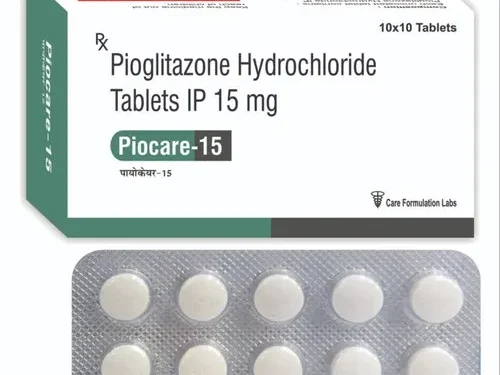Pioglitazone is a medication primarily used to manage blood sugar levels in adults with type 2 diabetes, but did you know it can also be prescribed to pediatric patients? In this article, we’ll explore the various forms and strengths of Pioglitazone available, as well as special dosing considerations for different medical categories.
Whether you’re an adult seeking information for yourself or a caregiver responsible for a pediatric patient, understanding the proper dosage of Pioglitazone is essential for safe and effective treatment. Let’s dive in and equip you with the knowledge you need to make informed healthcare decisions.
Pioglitazone Adult Dose for Diabetes Type 2
In the typical adult dosage for managing Type 2 diabetes, the initial dose of Pioglitazone varies depending on the presence of congestive heart failure. For patients without congestive heart failure, the initial dose can be either 15 mg or 30 mg, taken orally once a day. On the other hand, for patients with congestive heart failure falling into New York Heart Association (NYHA) Class I or II, the initial dose is 15 mg, also taken orally once a day. The maintenance dose, which is adjusted based on the individual’s glycemic response as determined by HbA1c levels, can range from 15 mg to a maximum of 45 mg, taken orally once a day.
It’s important to note that Pioglitazone’s antihyperglycemic effect is contingent on the presence of endogenous insulin. Therefore, it is not typically effective for patients with Type 1 diabetes mellitus or diabetic ketoacidosis. For those who are concurrently using an insulin secretagogue or insulin, it might be necessary to reduce the dosage of the insulin secretagogue or insulin if hypoglycemia occurs during treatment with Pioglitazone.
The primary use of Pioglitazone is as an adjunct to diet and exercise. It is prescribed to improve glycemic control in adults who have Type 2 diabetes mellitus and can be employed in various clinical settings. Always consult with a healthcare professional for personalized dosing instructions.
| Patient Category | Initial Dose | Maintenance Dose | Maximum Dose |
| Patients without congestive heart failure | 15 mg or 30 mg orally once a day | – | – |
| Patients with congestive heart failure (NYHA Class I or II) | 15 mg orally once a day | 15 mg to 45 mg orally once a day | 45 mg orally once a day |
Liver Dose Adjustments
- Caution in Patients with Liver Disease.
- Use this medication with care in individuals with liver disease.
Pre-Treatment Evaluation
- Before starting the treatment, obtain liver function test results, including ALT, AST, alkaline phosphatase, and total bilirubin.
Monitoring During Treatment
- If any symptoms indicative of liver injury appear, such as fatigue, loss of appetite, discomfort in the upper right abdomen, dark urine, or jaundice, promptly conduct liver function tests.
- If ALT levels exceed three times the upper limit of normal (ULN), pause the treatment and investigate the cause.
Cautions for Severe Liver Injury
- Do not resume treatment if ALT is more than three times ULN and total bilirubin is more than two times ULN, without determining alternative reasons, as there is a risk of severe drug-induced liver injury.
Restarting Treatment with Caution
- For patients with milder elevations in ALT or bilirubin and an alternative likely cause, treatment may be cautiously restarted.
Pioglitazone Dosage Modification
Concomitant Use with an Insulin Secretagogue (e.g. sulfonylurea)
- If hypoglycemia occurs, consider reducing the dose of the insulin secretagogue.
Concomitant Use with Insulin
- If hypoglycemia occurs, reduce the insulin dose by 10% to 25%. Further adjustments to the insulin dosage should be personalized based on the individual’s glycemic response.
Concomitant Use with Gemfibrozil or Other Strong CYP450 2C8 Inhibitors
- The maximum recommended daily dose when taking Gemfibrozil or other strong CYP450 2C8 inhibitors is 15 mg.
Administration Guidelines
Administer orally once a day, with the option to take it with or without meals.
Precautions
Us Boxed Warnings
- Thiazolidinediones may induce or worsen congestive heart failure in certain patients.
- After commencing treatment and following dosage increments, vigilantly monitor patients for indications and symptoms of heart failure, such as excessive and rapid weight gain, dyspnea, or edema. If heart failure does occur, it should be managed in accordance with the current standards of care, and consideration should be given to discontinuing or reducing the dosage of pioglitazone. Pioglitazone is not advisable for patients with symptomatic heart failure.
- The initiation of therapy is contraindicated for patients with established New York Heart Association (NYHA) Class III or IV heart failure. It’s important to note that safety and efficacy have not been established for patients below 18 years of age. Please refer to the WARNINGS section for additional precautions.



